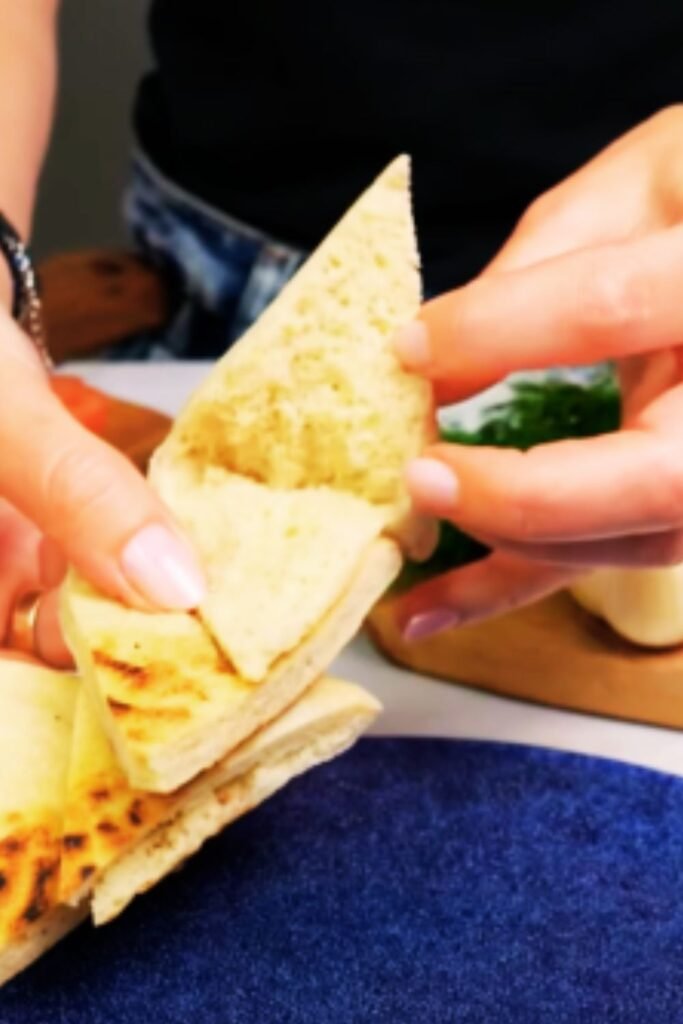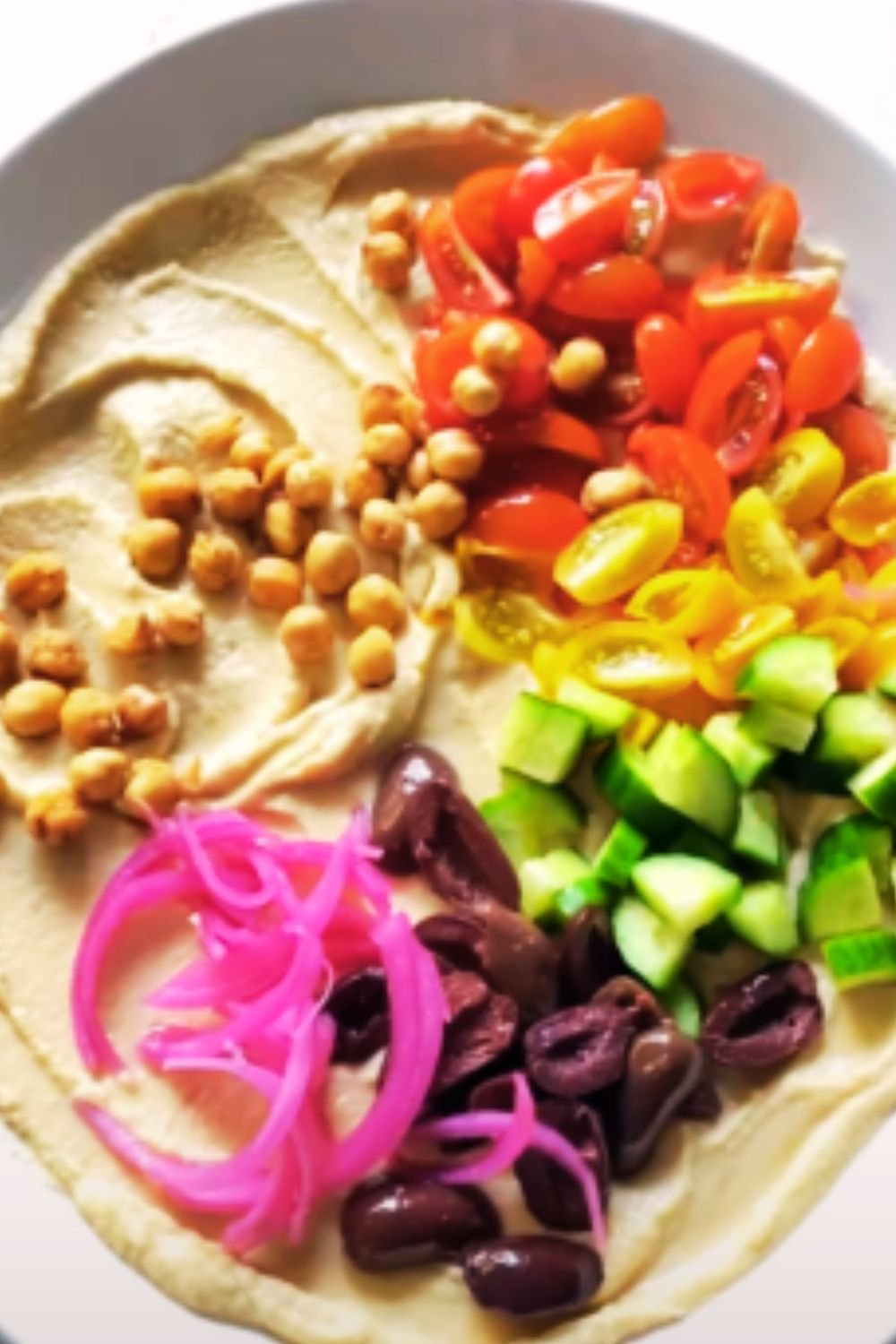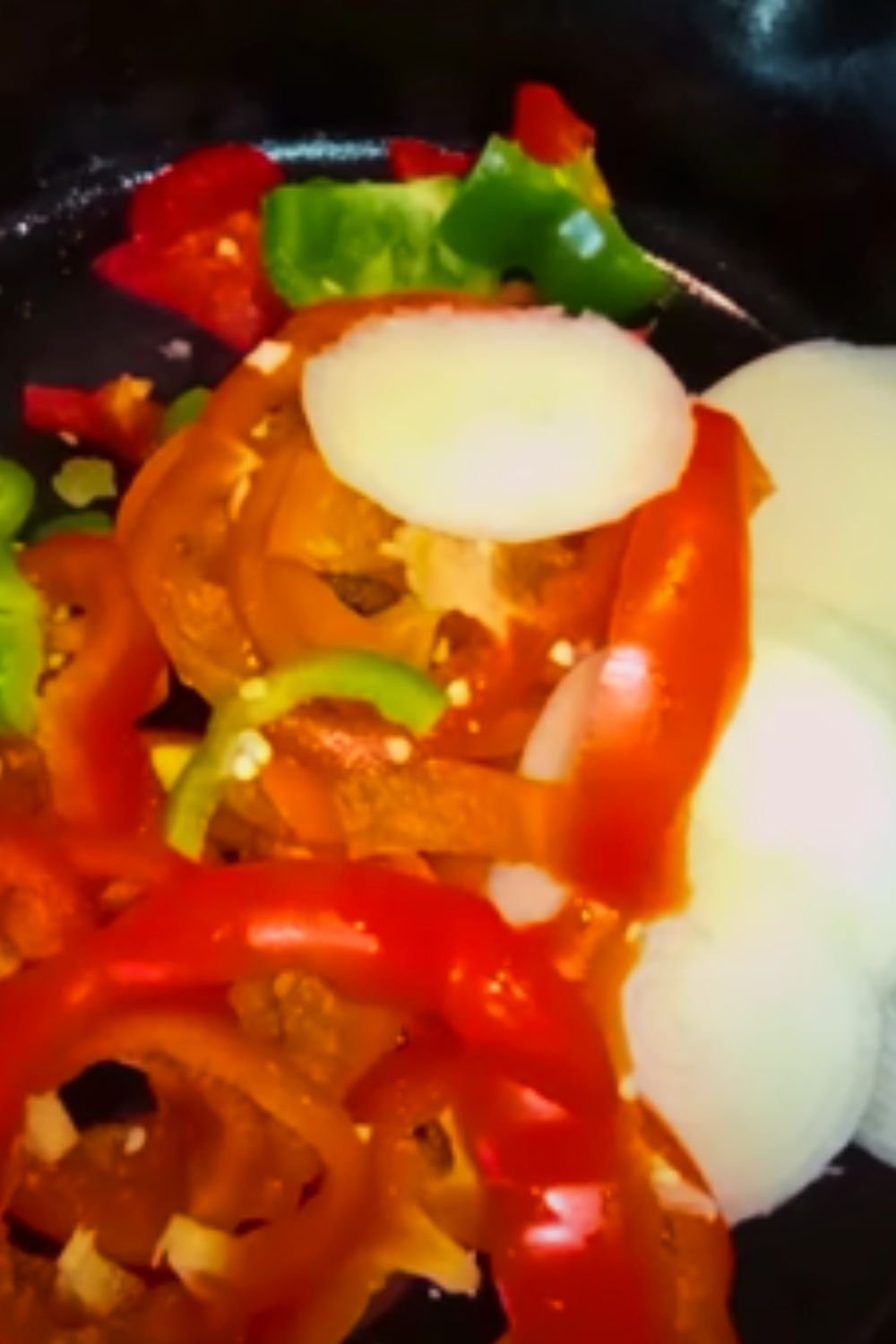There’s something magical about the sizzle of marinated chicken hitting a hot grill, the aromatic herbs dancing in the air, and that first bite of perfectly seasoned souvlaki that transports you straight to a sun-drenched Greek taverna. I’ve been perfecting my Greek chicken souvlaki recipe for over a decade, and today I’m sharing everything I’ve learned about creating this beloved Mediterranean masterpiece in your own kitchen.
Greek chicken souvlaki isn’t just food—it’s a celebration of simplicity meeting bold flavors. This traditional dish has been gracing Greek tables for centuries, evolving from ancient cooking methods to become one of the most recognizable Greek dishes worldwide. What makes my approach special is the attention to authentic techniques combined with modern convenience, ensuring you get restaurant-quality results every single time.
Understanding Authentic Greek Souvlaki
Souvlaki: A traditional Greek dish consisting of small pieces of meat grilled on skewers, typically served with pita bread, vegetables, and tzatziki sauce.
Marinade: A mixture of oil, acid (lemon juice or vinegar), and seasonings used to tenderize and flavor meat before cooking.
Tzatziki: A creamy Greek sauce made from yogurt, cucumber, garlic, and herbs, traditionally served alongside souvlaki.
Pita: A round, flat bread that’s slightly leavened and commonly used in Mediterranean cuisine to wrap or accompany grilled meats.
The beauty of authentic souvlaki lies in its rustic simplicity. When I first tasted genuine souvlaki during my trip to Athens, I was struck by how the Greeks let each ingredient shine without overwhelming the palate. The chicken was tender and juicy, the herbs were fresh and vibrant, and everything worked in perfect harmony.
The Perfect Chicken Selection and Preparation
Choosing the right chicken cuts makes all the difference in your souvlaki success. I always opt for boneless, skinless chicken thighs over breasts because thighs remain incredibly juicy even when grilled at high temperatures. The extra fat content in thighs prevents them from drying out, and they absorb marinades more effectively than leaner breast meat.
When preparing your chicken, I cut each thigh into uniform pieces about 1.5 inches in size. This ensures even cooking and makes threading onto skewers much easier. I’ve learned that slightly larger pieces work better than tiny chunks because they retain more moisture during the grilling process.
Essential Marinade Components
| Ingredient | Amount (serves 6) | Purpose | Substitution Options |
|---|---|---|---|
| Olive Oil | 1/3 cup | Tenderizes meat, prevents sticking | Avocado oil, vegetable oil |
| Fresh Lemon Juice | 1/4 cup | Acid for tenderizing, bright flavor | Lime juice, white wine vinegar |
| Garlic | 4 cloves, minced | Aromatic base flavor | Garlic powder (1 tsp) |
| Dried Oregano | 2 tablespoons | Traditional Greek herb | Fresh oregano (3 tbsp) |
| Salt | 1 teaspoon | Flavor enhancement, moisture retention | Sea salt, kosher salt |
| Black Pepper | 1/2 teaspoon | Spice balance | White pepper |
| Fresh Thyme | 1 tablespoon | Earthy complement | Dried thyme (1 tsp) |
| Bay Leaves | 2 leaves | Subtle depth | Skip if unavailable |
My marinade technique involves whisking together all ingredients except the bay leaves, then crushing the bay leaves between my fingers to release their oils before adding them to the mixture. This small step makes a noticeable difference in the final flavor profile.

Mastering the Marination Process
The marination process is where patience truly pays off. I always marinate my chicken for a minimum of 4 hours, but my preference is overnight marination for 12-24 hours. This extended time allows the acids to properly break down the muscle fibers while the herbs and garlic penetrate deep into the meat.
Here’s my step-by-step marination method:
- Place chicken pieces in a non-reactive bowl or zip-lock bag
- Pour marinade over chicken, ensuring all pieces are well-coated
- Massage the marinade into the meat gently with clean hands
- Cover tightly and refrigerate, turning once halfway through marination
- Remove from refrigerator 30 minutes before cooking to bring to room temperature
The room temperature step is crucial because cold meat hitting a hot grill creates uneven cooking. I’ve made this mistake countless times in my early cooking days, resulting in overcooked exteriors and undercooked centers.
Threading and Grilling Techniques
Skewer Preparation Guidelines
| Skewer Type | Soaking Time | Benefits | Best For |
|---|---|---|---|
| Wooden | 30-60 minutes | Prevents burning, affordable | Casual cooking |
| Bamboo | 45-90 minutes | Stronger than wood, eco-friendly | Medium use |
| Metal | No soaking needed | Reusable, even heat distribution | Frequent grilling |
| Flat Metal | No soaking needed | Prevents food rotation | Professional results |
I prefer flat metal skewers because they prevent the chicken from spinning when you flip them, ensuring even browning on all sides. If you’re using wooden skewers, don’t skip the soaking step—I learned this lesson the hard way when my first batch caught fire!
When threading chicken onto skewers, I leave small spaces between pieces to ensure proper air circulation and even cooking. Cramming pieces too tightly together creates steam pockets that result in unevenly cooked meat.
Optimal Grilling Setup
My ideal grilling setup involves creating two heat zones on your grill: a high-heat direct zone for searing and a medium-heat indirect zone for finishing. This two-zone approach gives you complete control over the cooking process.
Direct Heat Zone: High heat (450-500°F) for initial searing and caramelization Indirect Heat Zone: Medium heat (350-375°F) for gentle finishing without burning
I start by searing the souvlaki over direct heat for 2-3 minutes per side to develop that beautiful golden crust, then move them to the indirect zone to finish cooking. This typically takes another 8-10 minutes, depending on the size of your chicken pieces.

Temperature and Timing Mastery
Getting the internal temperature right is non-negotiable when it comes to chicken safety and quality. I always use an instant-read thermometer to ensure my souvlaki reaches exactly 165°F (74°C) in the thickest part of the meat.
Grilling Timeline Breakdown
| Stage | Time | Temperature | Visual Cues |
|---|---|---|---|
| Initial Sear | 2-3 min per side | 450-500°F | Golden brown crust forms |
| First Flip | 2-3 minutes | 450-500°F | Juices begin to surface |
| Move to Indirect | 4-5 minutes | 350-375°F | No more raw appearance |
| Final Check | 4-5 minutes | 350-375°F | Internal temp 165°F |
| Rest Period | 3-5 minutes | Off heat | Juices redistribute |
The resting period is often overlooked but absolutely essential. During this time, the juices redistribute throughout the meat, ensuring every bite is succulent and flavorful. I cover my finished souvlaki loosely with foil during this rest period.
Traditional Tzatziki Sauce Recipe
No souvlaki is complete without authentic tzatziki, and I’ve perfected my recipe through years of experimentation. The key is achieving the perfect balance between creamy yogurt, refreshing cucumber, and pungent garlic.
Tzatziki Ingredients and Measurements
| Ingredient | Amount | Preparation Method | Quality Tips |
|---|---|---|---|
| Greek Yogurt | 2 cups | Drain excess whey | Use full-fat for richness |
| Cucumber | 1 large | Grated and salted | English cucumbers work best |
| Garlic | 3-4 cloves | Minced fine | Fresh only, no powder |
| Fresh Dill | 2 tablespoons | Chopped fine | Dried dill (1 tbsp) substitute |
| Lemon Juice | 2 tablespoons | Fresh squeezed | Bottled lacks brightness |
| Olive Oil | 2 tablespoons | Extra virgin | Good quality makes difference |
| Salt | 1/2 teaspoon | To taste | Sea salt preferred |
My tzatziki technique involves grating the cucumber, then salting it heavily and letting it sit in a strainer for 30 minutes. This draws out excess moisture that would otherwise make your tzatziki watery. After draining, I squeeze the cucumber in a clean kitchen towel to remove even more liquid.
I mix the yogurt with minced garlic first, allowing those flavors to meld while I prepare the cucumber. Then I fold in the squeezed cucumber, fresh dill, lemon juice, and olive oil. The result is a thick, creamy sauce that clings beautifully to the grilled chicken.
Assembly and Serving Suggestions
The traditional way to serve souvlaki involves warm pita bread, but I’ve discovered several presentation methods that work beautifully for different occasions.
Classic Pita Wrap Method
I warm my pita bread either on the grill for 30 seconds per side or wrapped in damp paper towels in the microwave for 20 seconds. The slight warmth makes the pita more pliable and enhances its flavor.
For assembly, I spread a generous layer of tzatziki on the pita, add 3-4 pieces of chicken souvlaki, then top with diced tomatoes, thinly sliced red onion, and fresh cucumber. A sprinkle of crumbled feta cheese adds an authentic finishing touch.
Platter-Style Presentation
When entertaining, I arrange the souvlaki on a large platter alongside warm pita triangles, bowls of tzatziki, and an assortment of fresh vegetables. This family-style approach encourages sharing and creates a more relaxed dining atmosphere.
Recommended Accompaniments:
- Warm pita bread or pita chips
- Greek village salad (horiatiki)
- Roasted red peppers
- Kalamata olives
- Crumbled feta cheese
- Fresh cucumber slices
- Cherry tomatoes
- Thinly sliced red onion
Nutritional Benefits and Dietary Considerations
Greek chicken souvlaki offers impressive nutritional benefits when prepared with quality ingredients. The lean protein from chicken thighs provides all essential amino acids, while the olive oil contributes heart-healthy monounsaturated fats.
Nutritional Breakdown Per Serving
| Component | Amount | Percentage Daily Value | Health Benefits |
|---|---|---|---|
| Protein | 32g | 64% | Muscle maintenance, satiety |
| Healthy Fats | 14g | 18% | Heart health, nutrient absorption |
| Carbohydrates | 8g | 3% | Quick energy (from vegetables) |
| Fiber | 2g | 8% | Digestive health |
| Vitamin C | 15mg | 17% | Immune support |
| Iron | 2.1mg | 12% | Oxygen transport |
The Mediterranean diet principles embodied in this dish have been linked to numerous health benefits, including reduced inflammation, improved heart health, and better cognitive function. The combination of lean protein, healthy fats, and fresh vegetables creates a well-balanced meal that satisfies without weighing you down.
For those following specific dietary plans, souvlaki adapts beautifully:
Keto-Friendly: Skip the pita and serve over cauliflower rice or zucchini noodles Paleo: Use coconut aminos instead of any soy-based ingredients Gluten-Free: Serve with gluten-free pita or lettuce wraps Low-Carb: Focus on the protein and vegetable components

Common Mistakes and How to Avoid Them
Through my years of making souvlaki, I’ve encountered every possible pitfall. Here are the most common mistakes I see home cooks make and how to avoid them:
Insufficient Marination Time: Many people try to rush the process, but proper marination requires patience. Always plan ahead and give your chicken at least 4 hours in the marinade.
Overcrowding the Grill: This drops the temperature and creates steam instead of the searing heat needed for proper caramelization. Cook in batches if necessary.
Not Preheating Properly: A properly preheated grill is essential for good sear marks and even cooking. I always preheat for at least 15 minutes before adding food.
Constant Flipping: Resist the urge to constantly turn your souvlaki. Let each side develop proper color before flipping, usually 2-3 minutes per side.
Ignoring Internal Temperature: Using a thermometer isn’t optional with chicken. Food safety requires reaching 165°F internal temperature.
Storage and Meal Prep Tips
Souvlaki makes excellent meal prep because both the marinated chicken and finished product store well. I often prepare double batches on weekends for easy weeknight dinners.
Marinated Chicken Storage: Raw marinated chicken keeps in the refrigerator for up to 2 days or can be frozen for up to 3 months. If freezing, I use the marination time as part of the thawing process.
Cooked Souvlaki Storage: Grilled souvlaki stays fresh in the refrigerator for 3-4 days. I store it in airtight containers and reheat gently in the microwave or quickly on a hot skillet.
Tzatziki Longevity: Fresh tzatziki keeps for up to 5 days refrigerated. The flavors actually improve after the first day as everything melds together.
For reheating, I’ve found that a quick sear in a hot skillet for 1-2 minutes per side works better than microwaving, which can make the chicken rubbery.
Variations and Creative Adaptations
While traditional souvlaki is perfection on its own, I enjoy experimenting with variations that maintain the authentic spirit while adding personal touches.
Lemon-Herb Variation: I sometimes add fresh rosemary and extra lemon zest to the marinade for a brighter, more aromatic profile.
Spicy Version: A pinch of red pepper flakes or a small amount of harissa paste creates a gentle heat that complements the Mediterranean flavors.
Honey-Touched: A tablespoon of honey in the marinade adds subtle sweetness and promotes better caramelization during grilling.
Indoor Adaptation: When outdoor grilling isn’t possible, I use a grill pan or cast-iron skillet over high heat, achieving surprisingly similar results.
The Cultural Significance of Souvlaki
Understanding the cultural context makes this dish even more special. Souvlaki represents the Greek approach to food: simple ingredients prepared with care and shared with loved ones. In Greece, souvlaki isn’t just a meal—it’s a social experience that brings people together.
The word “souvlaki” comes from the Greek word “souvla,” meaning spit or skewer. This cooking method dates back thousands of years, with archaeological evidence suggesting that ancient Greeks were grilling meat on skewers as early as the Bronze Age.
Modern souvlaki evolved in the 1950s and 1960s as Greece urbanized and people needed quick, affordable, nutritious meals. Street vendors perfected the art of grilling small pieces of meat quickly over high heat, creating the souvlaki we know today.
Questions and Answers
Q. How long should I marinate chicken for souvlaki? I recommend marinating for a minimum of 4 hours, but overnight (12-24 hours) produces the best results. The acids in the marinade need time to properly tenderize the meat while the flavors penetrate deeply.
Q. Can I use chicken breast instead of thighs? While you can use chicken breast, thighs are preferable because they stay more moist during grilling. If using breast meat, be extra careful not to overcook, and consider pounding them slightly to ensure even thickness.
Q. What’s the best way to prevent wooden skewers from burning? Soak wooden skewers in water for at least 30 minutes before threading the chicken. For extra protection, you can wrap the exposed ends in aluminum foil before grilling.
Q. How do I know when the souvlaki is properly cooked? The most reliable method is using an instant-read thermometer to check that the internal temperature reaches 165°F (74°C). Visually, the chicken should be golden brown on all sides with no pink remaining.
Q. Can I make souvlaki ahead of time for a party? Absolutely! You can marinate the chicken up to 2 days in advance, and cooked souvlaki can be kept warm in a low oven (200°F) for up to 2 hours. The tzatziki can be made 1-2 days ahead and actually improves in flavor.
Q. What’s the difference between souvlaki and gyros? Souvlaki consists of individual pieces of meat grilled on skewers, while gyros is made from a large cone of meat that’s sliced as it rotates on a vertical spit. Both are served with similar accompaniments but use different cooking methods.
Q. Can I freeze marinated chicken for later use? Yes! Frozen marinated chicken is actually convenient because it marinates while thawing. Place chicken and marinade in freezer bags, freeze for up to 3 months, then thaw in the refrigerator 24 hours before cooking.
Q. How do I prevent the chicken from sticking to the grill? Make sure your grill grates are clean and well-oiled before cooking. The marinade’s olive oil content helps, but additional oil on the grates provides extra insurance. Also, don’t flip the chicken too early—it will release naturally when properly seared.
Q. What vegetables work well with souvlaki? Traditional accompaniments include tomatoes, cucumbers, and red onions. I also love adding grilled zucchini, bell peppers, or eggplant to the skewers themselves for extra flavor and nutrition.
Q. Is there a vegetarian version of souvlaki? While traditional souvlaki is meat-based, you can create delicious vegetarian versions using firm tofu, halloumi cheese, or vegetables like zucchini and bell peppers. Use the same marinade and grilling techniques for excellent results.
Creating authentic Greek chicken souvlaki at home is incredibly rewarding and brings the vibrant flavors of the Mediterranean directly to your table. With proper technique, quality ingredients, and a little patience, you’ll be serving restaurant-quality souvlaki that rivals any Greek taverna. The combination of tender, flavorful chicken with cool, creamy tzatziki and fresh vegetables creates a meal that’s both satisfying and healthy—perfect for any occasion from casual weeknight dinners to entertaining friends and family.



